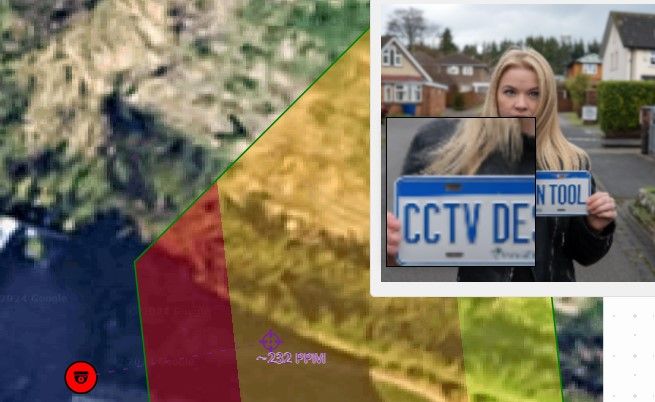DORI – A Key Standard for Evaluating Image Quality in CCTV Systems
In modern video surveillance systems, it’s not just about capturing "something," but how accurately the camera can represent reality. This is where the DORI standard comes into play, helping you define the image quality requirements based on your surveillance goals. With DORI, you can clearly determine which parameters are needed for detecting, recognizing, or identifying objects.
What Is DORI?
DORI stands for Detect, Observe, Recognize, and Identify. Described in the EN 62676-4 standard, it specifies the number of pixels per meter (px/m) required to achieve each level of image quality:
- Detect: approximately 25 px/m
- Observe: approximately 63 px/m
- Recognize: approximately 125 px/m
- Identify: approximately 250 px/m
The higher the pixels per meter, the greater the level of detail captured.
DORI Zones and Color Visualization
To simplify planning and assessing image quality, our CCTVDesignTool.com application uses color-coded DORI zones. These colors help you quickly understand the level of detail you can achieve in different areas of the camera’s field of view:
- GREEN (Detect – ~25 px/m): Objects are visible, but details are lacking. You can notice movement or presence, but not specifics.
- YELLOW (Observe – ~63 px/m): You can observe a person’s behavior, silhouette, or the general context. This level allows for situational awareness but not facial recognition.
- ORANGE (Recognize – ~125 px/m): At this level, you can recognize whether a person is familiar—an employee, family member, or someone you’ve seen before.
- RED (Identify – ~250 px/m): The highest level of detail, allowing you to clearly identify a person, see distinct facial features, and even small details.
Why Is DORI Important?
DORI is a practical tool for designers, installers, and end-users of CCTV systems:
- Accurate Planning: Even during the design phase, you can determine at what distance from the camera you’ll achieve the required image quality.
- Tailored to Your Needs: Depending on your goals—general observation, facial recognition, or full identification—you can select cameras, lenses, and placements that best meet those requirements.
- Time and Cost Savings: By knowing what results to expect upfront, you avoid costly trial-and-error installations and ensure the right solution from the start.
Designing and Simulating in CCTVDesignTool.com
Our platform, CCTVDesignTool.com, is built to support designers, installers, and end-users:
- View DORI Zones on the Floor Plan: Simply choose a camera from our catalog and place it on your layout. The system automatically generates color-coded zones to show different image quality areas—instantly revealing where detection or identification is possible.
- Image Quality Simulation: See how a selected camera will perform in practice. Determine if it’s sufficient for detection or if it can achieve full identification, helping you invest wisely in equipment.
- Compare Different Configurations: Experiment with various camera models, lenses, and placements. Select the solutions that best fit your needs and budget.
DORI is not just a theoretical concept—it’s a practical guideline that streamlines the design and configuration of CCTV systems. By leveraging the color-coded DORI zones and features in our application, you can easily match equipment to requirements, ensuring maximum surveillance effectiveness—from basic detection to precise identification of individuals and objects.

